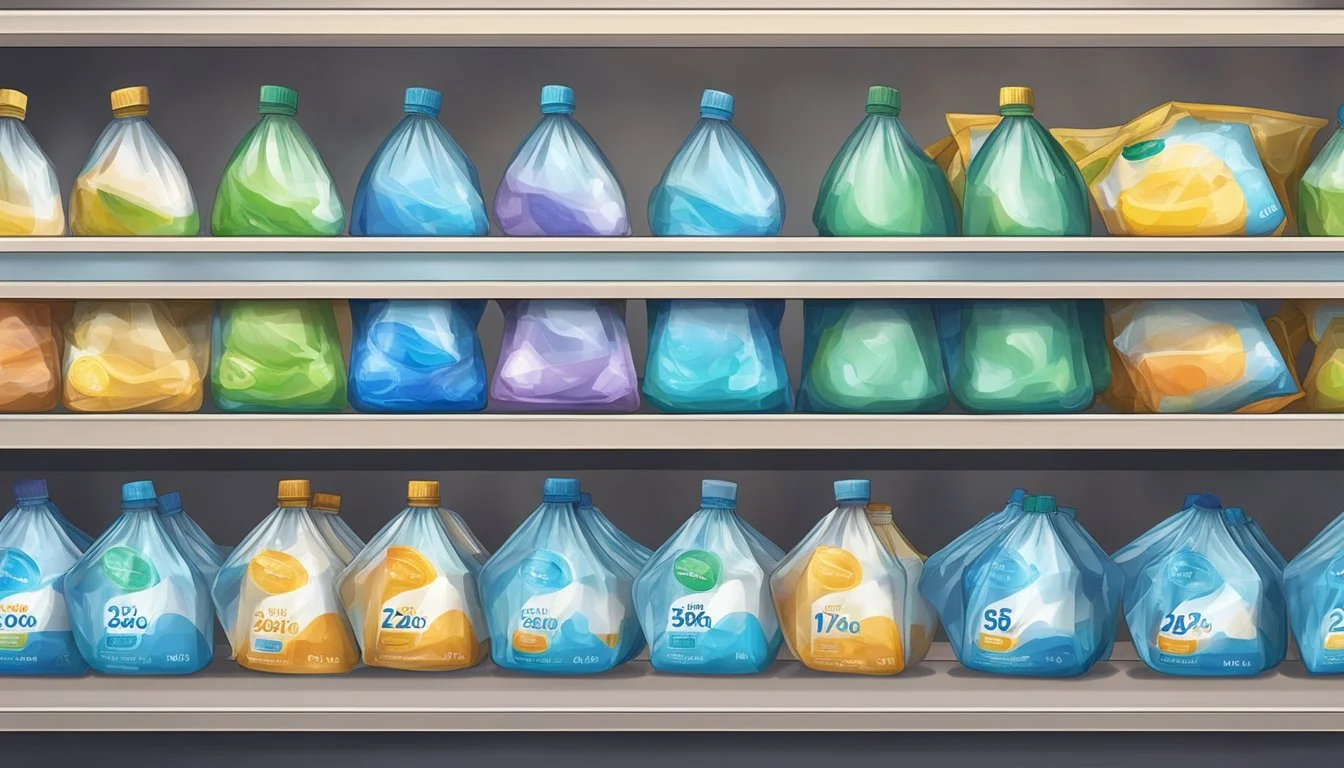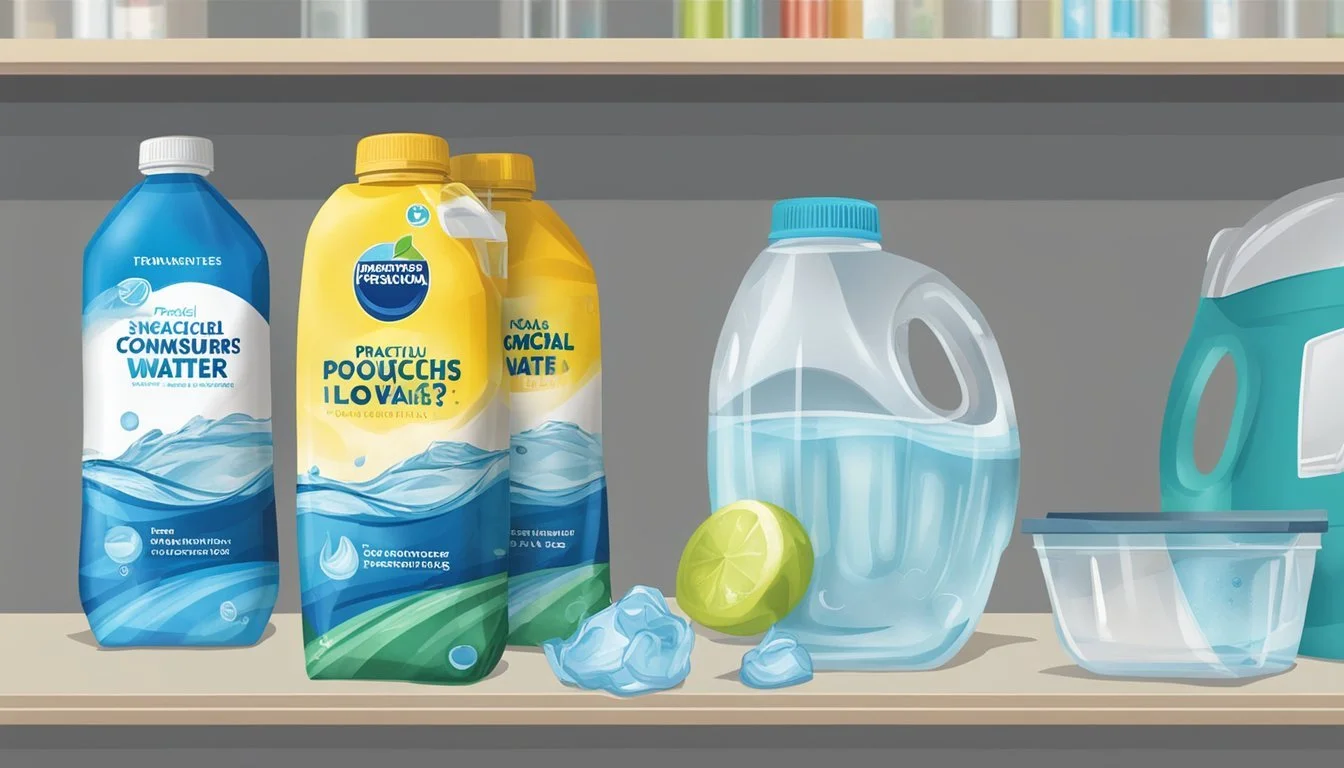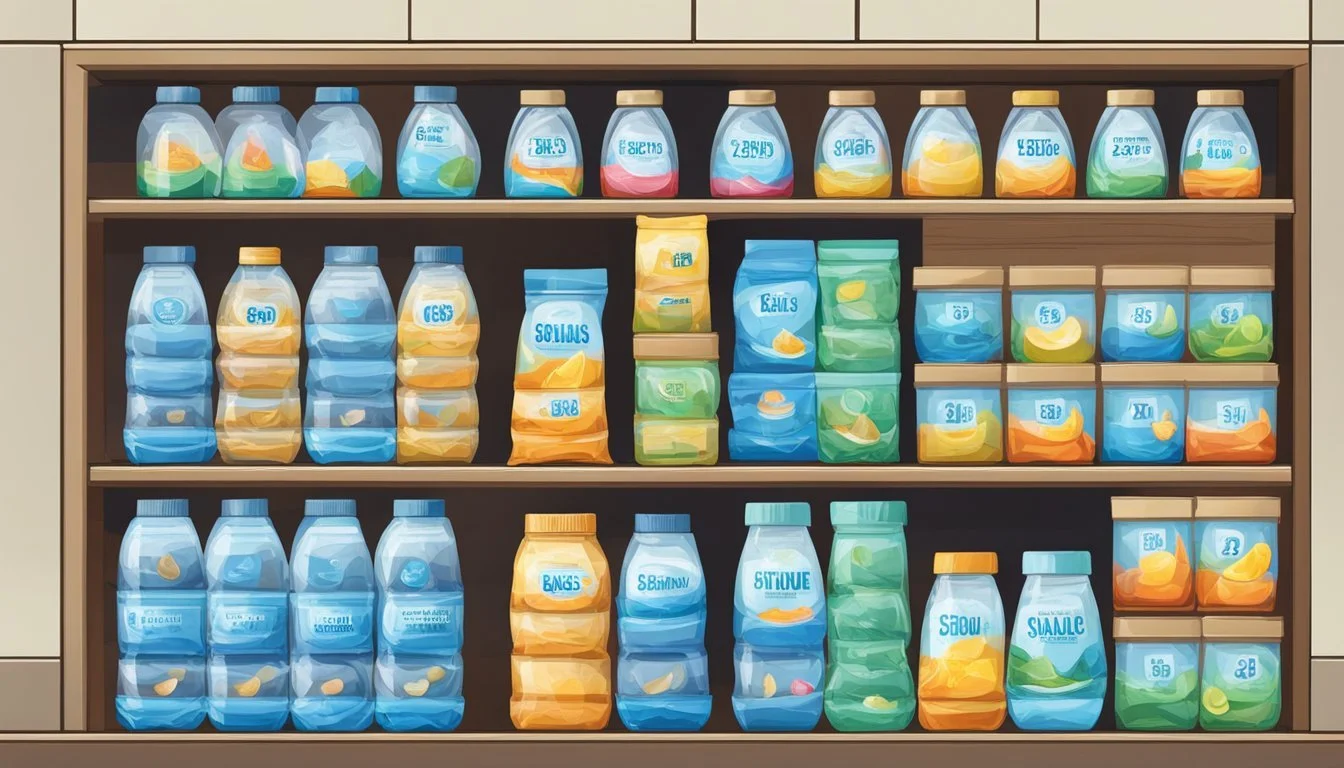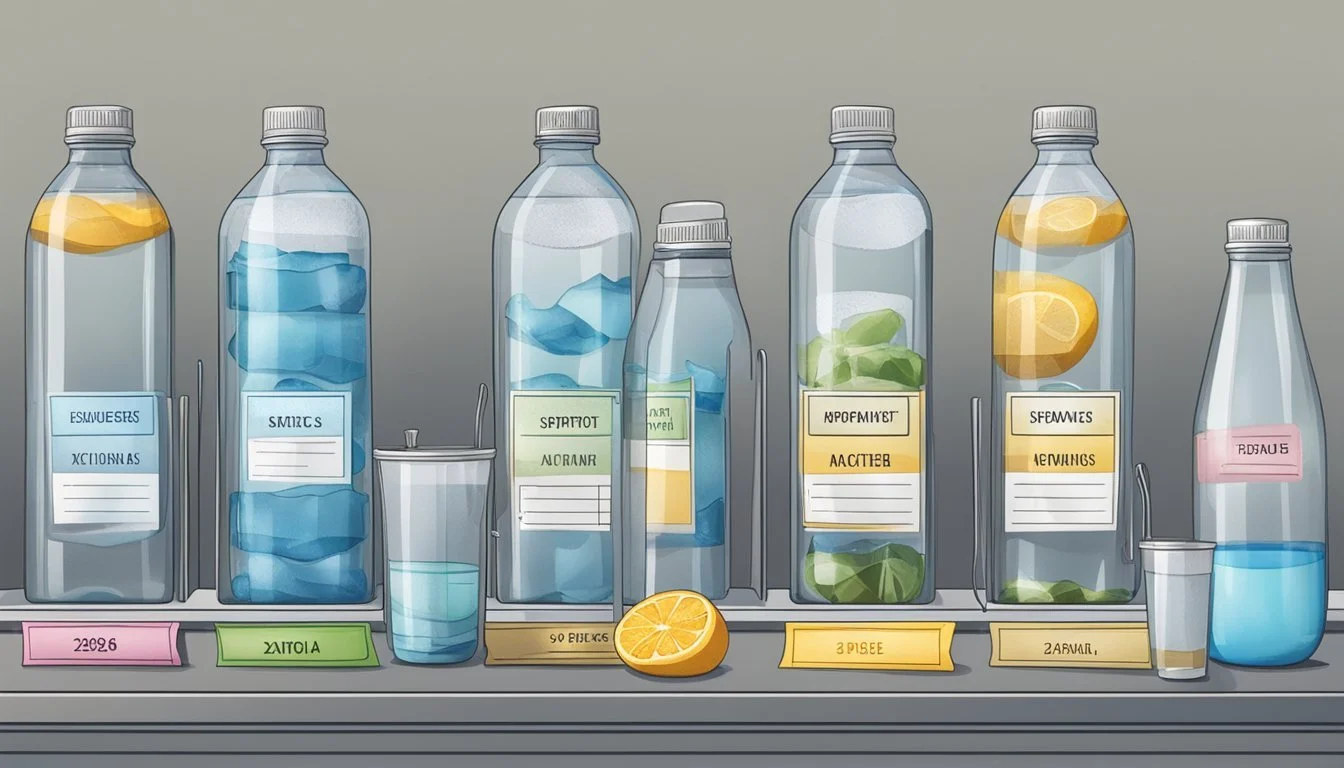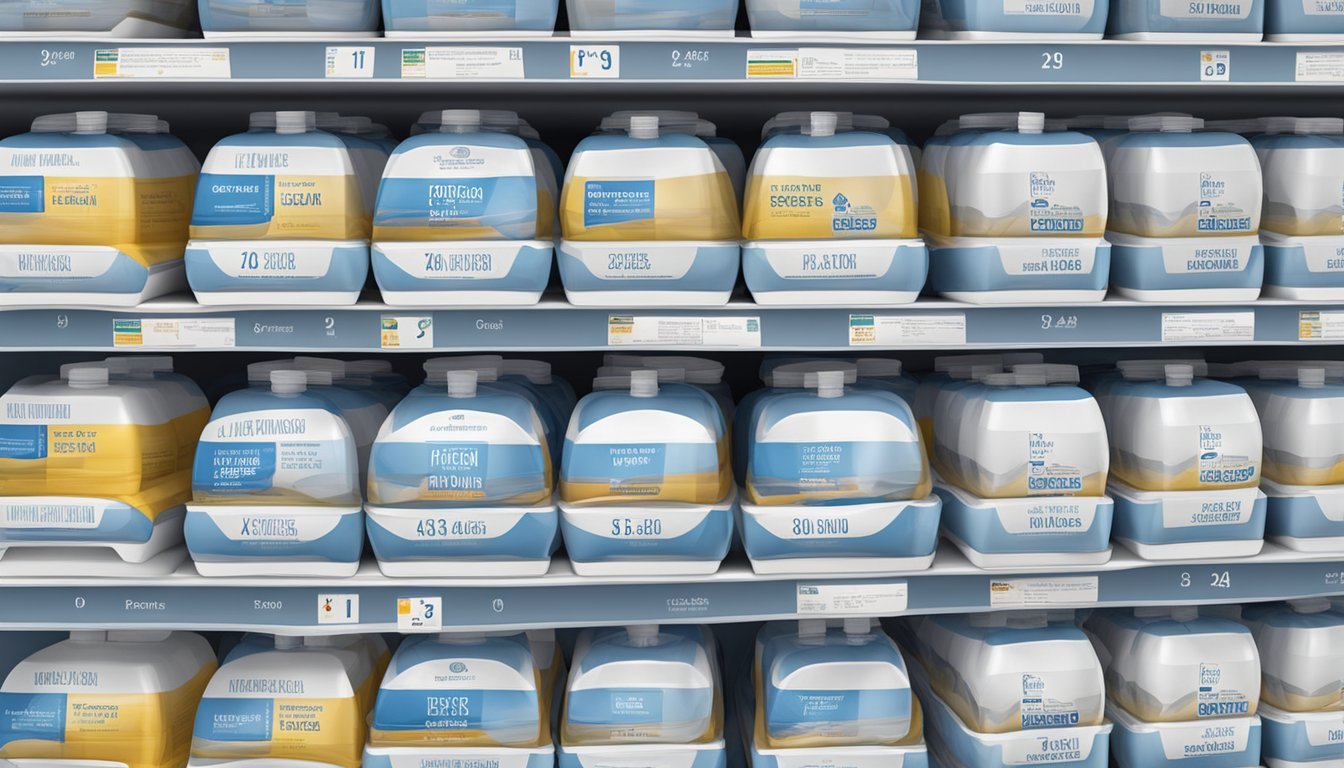How Long Do Water Pouches Last?
Understanding Their Shelf Life and Durability
Water pouches have become a staple in emergency preparedness kits for their compact size and convenience. In emergency situations, maintaining hydration is critical, and water pouches are designed to be portable solutions to this need. Typically, these pouches contain purified drinking water and are sealed to prevent contamination. They are made from durable materials to withstand various environmental conditions, making them ideal for both immediate use during disasters and long-term storage.
The shelf life of emergency water pouches varies by manufacturer, but most are marked with a shelf life of around five years. This expected lifespan is due to the sterilization process the water undergoes and the packaging's ability to prevent exposure to light and air, which can degrade the quality of the water over time. While the shelf life can give consumers a general guideline, the actual usability may depend on storage conditions, and it is essential to check for any specific storage instructions provided by the manufacturer to maximize longevity.
In assessing the longevity of water pouches, users should consider factors such as storage temperature and whether the pouches have been kept away from potential contaminants. While some manufacturers offer water pouches that can endure extreme temperatures, storage in a cool, dark place can aid in preserving their quality. If water pouches are nearing or past their expiration date, they may still be suitable for non-drinking purposes, such as cleaning or cooking, assuming the integrity of the pouch remains uncompromised.
Understanding Water Pouches
Water pouches are a reliable solution for convenient and safe hydration in emergency situations. They provide portability and ease of storage, which are essential in crisis environments.
Types of Water Pouches
Water pouches come in various types depending on their intended use. Emergency water pouches are the most common, designed for survival kits, emergency supplies, or disaster preparedness. Brands like Datrex offer specially formulated emergency drinking water that can be stored for extended periods. These pouches typically contain purified water and may also include added minerals for improved taste and nutrition.
Material and Packaging
The material and packaging of water pouches are crucial factors in determining their durability and shelf life. Most water pouches use a multi-layered film combining plastic and aluminum, which serves to prevent air and light from degrading the water quality. It's important to note that many of these pouches are now BPA-free, ensuring that the water does not become contaminated with harmful chemicals over time. These materials help to make the pouches robust, enabling them to withstand harsh conditions without leakage.
The packaging of water pouches not only protects the water from environmental factors but also facilitates ease of distribution and storage. Emergency water pouches are usually compact, which makes them convenient for packing in emergency kits or for carrying during evacuation scenarios.
Shelf Life Essentials
Water pouches are a critical component in emergency preparedness, offering a conveniently packaged water supply. The longevity of these water pouches hinges on factors like manufacturing processes, storage conditions, and material composition.
Determining Shelf Life
The shelf life of water pouches typically extends up to 5 years from the date of manufacture. This span is influenced by factors such as the materials used in the pouch's construction and the sterilization process during packaging. Water pouch manufacturers often specify the expiration date, considering the degradation rate of packaging materials and the potential leaching of substances into the water over time.
Manufacturing Date: Look for a clearly printed date to understand the pouch's production timeline.
Expiration Guidelines: Heed the manufacturer's recommended disposal timeline for optimal safety.
Expiration and Storage Conditions
The integrity of water pouches can be compromised by temperature fluctuations and exposure to external elements like ozone or ultraviolet light, which may accelerate breakdown. Proper storage is paramount in preserving their condition and extending shelf life.
Temperature: Store water pouches in a stable, cool environment to mitigate the risk of accelerated degradation.
Physical Environment: Avoid direct sunlight and places where puncture or contamination risks are high.
By adhering to these considerations, one can optimize the utility of water pouches within their designated shelf life.
Storage and Maintenance
When it comes to storing emergency water pouches, understanding proper storage methods and maintenance is essential for ensuring the longevity and safety of your water supply.
Best Practices for Storage
The optimal storage of water pouches requires a consideration of container quality and environmental conditions. Water pouches should be stored in high-quality, BPA-free containers to prevent the leaching of harmful substances into the water. Clean water is a must, so starting with purified water ensures the lowest risk of contamination over time. These containers must be kept with a secure seal to prevent exposure to environmental contaminants.
It is best to store water pouches in a cool environment, ideally between 50 - 70°F, away from direct sunlight and heat sources to prevent the degradation of the pouch material and water quality. To maintain the integrity of your emergency water storage:
Regularly inspect pouches for damages or leaks.
Rotate stock, using and replenishing your supply to keep it fresh.
Addressing Contamination Risks
Contamination is a primary risk affecting the safety of stored water. To minimize these risks, users should ensure their storage containers are explicitly designed for long-term water storage and are made from food-grade materials that are FDA-approved.
To protect against viruses, bacteria, and other contaminants:
Treat water before storage with appropriate methods, such as household bleach, ensuring it complies with the recommended dosages for disinfection.
Inspect pouches regularly for any signs of material breakdown or compromised seals which could allow contaminants to enter.
By following these directed measures, your emergency water storage remains a reliable resource.
Health and Safety Considerations
When considering the longevity and safety of water pouches for drinking water, one must account for factors that can compromise the water's quality. These include potential health risks, and concerns regarding bacteria and chemicals.
Potential Health Risks
Water pouches should be assessed for their integrity and potential to harbor pathogens that can pose health risks. It is critical to ensure that water pouches have not surpassed their expiration date, since stale water can develop unpleasant odors and tastes, and more importantly can become a breeding ground for bacteria if the packaging has been compromised.
Bacteria and Chemical Concerns
Bacteria: The presence of bacteria in water pouches can render water unsafe to drink. Advanced filtration technology used in some emergency water pouches can remove 99.999999% of bacteria and 99.999% of parasites, ensuring the water is potable.
Chemicals: Chemical contamination can occur due to poor storage or compromised containers. It's imperative that one uses water pouches that are free from harmful chemicals, BPA, and other contaminants that could leach into the water. Materials used in the construction of water pouches should comply with health and safety regulations to minimize any risk of chemical exposure.
Practical Information for Consumers
When selecting emergency water supplies, consumers should weigh the balance between portability, longevity, and cost. It's essential to have accessible and reliable emergency water that meets your needs.
Choosing the Right Water Pouch
When in the market for water pouches, consumers should consider several factors. The size of the pouch is critical; typically, individual water pouches contain around 4 ounces of water. A standard recommendation is to consume 3-4 water pouches per day in an emergency situation, making packing and storage a consideration due to the quantity needed.
Water Pouch Size Daily Quantity Needed Total for 1 Week (7 days) 4 oz 3-4 pouches 21-28 pouches
The weight and portability of water pouches are also essential aspects. Water pouches are designed to be lightweight and easy to carry, making them a convenient option for most emergency kits. They’re typically more convenient than large barrels and are an ideal choice for on-the-move scenarios.
Cost vs. Value
In considering the cost versus value of water pouches, consumers should evaluate the longevity and durability of the product. Many pouches are US Coastguard-approved and engineered to withstand extreme temperatures, which speaks to their durability and value over time. The cost will reflect the quality and shelf life of the pouch, so consumers should seek pouches that offer a high degree of reliability without significant expense.
While individual pouches may seem inexpensive, it's paramount to compute the total cost of the quantity required to sustain each individual for the recommended duration of an emergency kit. Consumers should factor in the added value that water pouches provide in terms of their convenient size and weight, making them easily transportable in the event of an evacuation.
Specific Use Cases
In various situations where normal water supply is interrupted or unavailable, water pouches serve as a crucial hydration resource. Their lifespan and utility can vary depending on the context.
Emergency Preparedness
Preppers and those interested in emergency preparedness often include emergency drinking water pouches in their bug out bags. These water pouches usually have a shelf life of up to 5 years, making them an ideal choice for long-term storage. They are light and durable, designed to withstand a range of temperatures. Individuals should aim to have a minimum of one gallon of water per person per day, translating to approximately 96 water pouches per week for adequate hydration in emergencies.
Outdoor Activities
For enthusiasts engaged in hiking or camping, water pouches are a preferred hydration method due to their convenience and portability. They are easy to pack and carry, significantly reducing the weight compared to traditional water bottles. Hikers and campers should carry enough water for their trip, with an additional supply in case of emergency, as unexpected conditions can occur.
Natural Disasters
During natural disasters such as earthquakes, floods, or hurricanes, municipal water systems may become compromised, making water pouches a vital component of disaster preparedness kits. They provide a clean source of emergency water that can be distributed quickly and used immediately without the need for filtration. Relief agencies often utilize water pouches to ensure affected individuals have access to safe drinking water when regular supplies are disrupted.
Supplementary Gear and Accessories
In an emergency, water pouches are a critical supply, but they function best alongside specific gear and accessories designed for survival scenarios. This allows for comprehensive preparation against dehydration and ensures access to potable water.
Complementary Emergency Items
In addition to water pouches, an emergency kit should contain high-energy and long-lasting food items such as ration bars, which offer essential nutrients without the need for cooking. First aid kits are paramount, as they provide the necessary equipment to address minor injuries or health issues arising during a crisis. Here's a quick list of must-have items:
Ration Bars: Compact and calorie-dense, providing sustenance over extended periods.
First Aid Kit: Equipped to handle common injuries and basic medical situations.
Water Filtration and Purification
Even with bagged water on hand, one should consider water treatment solutions to ensure a safe drinking supply. Filters and purification methods can render found water sources safe to consume. For example:
Filters: Products like the LifeStraw remove pathogens and particulates from water.
Aquamira: A chemical treatment that eliminates bacteria, viruses, and cysts.
Bleach: Household bleach can be used to purify water, using 16 drops per gallon as a rule of thumb—ensure it's unscented, with 5-6% sodium hypochlorite.
Remember to verify the shelf-life and maintenance requirements of each item to keep your emergency supplies in optimal condition.
Regulations and Standards
Water pouches used for emergency hydration must comply with certain regulations and standards to ensure they are safe and effective for use in crisis situations. These regulations may vary by country and often include certifications and approvals from relevant authorities.
Certifications and Approvals
Water pouches intended for use in emergency situations must often receive certifications to confirm they meet specific safety and quality standards. In the United States, for example, water pouches might require Coast Guard approval, particularly if they are used for maritime emergency kits. This approval ensures the water pouches meet the necessary standards for emergency use at sea.
Similarly, in Canada, water pouches may need Transport Canada approval to be included in emergency kits for vehicles or aircraft. Transport Canada's endorsement assures that the water pouches are manufactured and tested to meet stringent guidelines for emergency situations in transportation contexts.
It is important for manufacturers and consumers to be aware of these certifications when selecting water pouches for emergency preparedness, as these approvals are indicative of the product's reliability and compliance with national safety regulations.
Additional Resources
The following section provides carefully selected educational references to assist readers in understanding water needs, rationing, and storage estimation. These resources are intended to offer clear and precise information from credible sources.
Educational References
Water Need: Visitors seeking accurate data on daily water consumption requirements can refer to the Mayo Clinic's website, which outlines the typically recommended water intake based on age, sex, and other factors.
Water Storage Calculator: TruePrepper offers a detailed water storage calculator that supports individuals in calculating their water storage needs. This tool aids in determining how much water one should store based on the size of their household and the anticipated duration of an emergency scenario.
Rationing: For guidance on rationing water supplies during an emergency, the American Red Cross provides specific recommendations. They cover essential tips for conserving water and ensuring that a limited supply lasts as long as needed.
Wells: The National Ground Water Association has comprehensive materials for well owners and anyone interested in setting up a well. Their resources include best practices for well maintenance and water safety.
Website: When it comes to reliable information and resources on water storage and emergency preparedness, Ready.gov and the Centers for Disease Control and Prevention (CDC) are exemplary sources. They offer an abundance of materials on proper storage techniques, water purification methods, and maintaining water quality.

